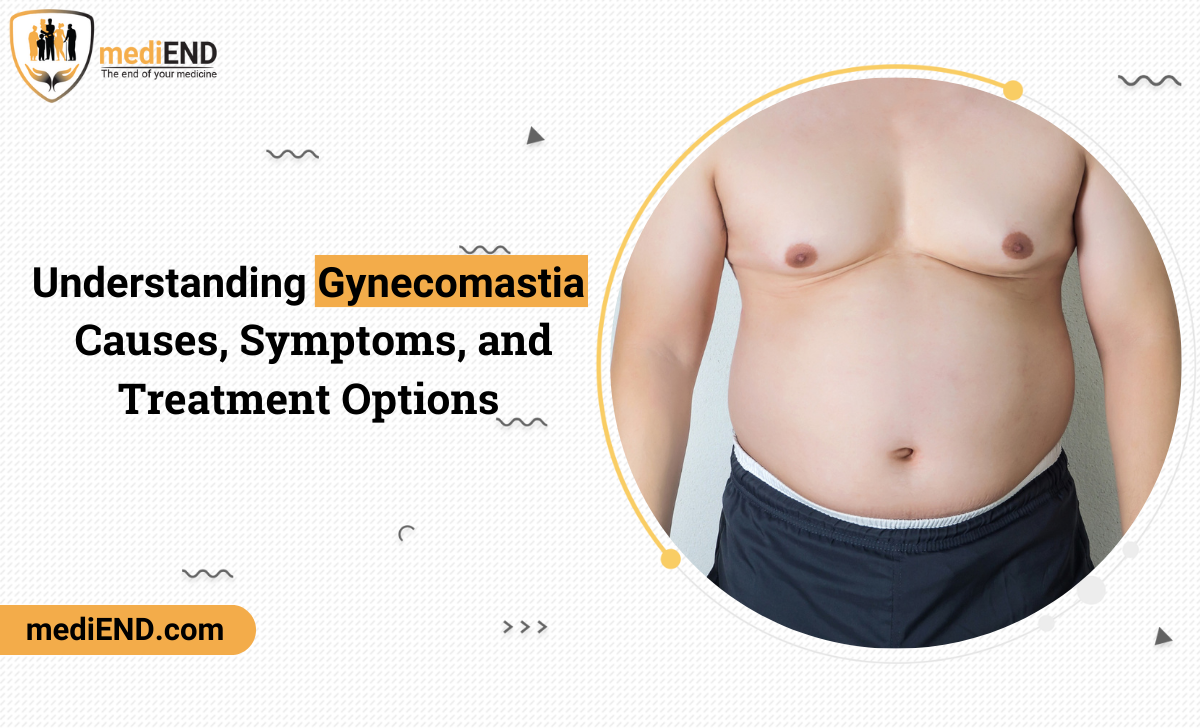Introduction
Gynecomastia, a condition characterized by the enlargement of male breasts, affects millions of men worldwide. It not only has physical effects but can also take a toll on a man's emotional well-being. Terms like moobs, man's boobs, and man tits are often used to refer to this condition, causing embarrassment and self-consciousness in affected individuals. In this article, we aim to provide a comprehensive understanding of gynecomastia, its causes, symptoms, and available treatment options. By educating ourselves and spreading awareness, we can address the stigma surrounding this condition and help men find the support and treatment they need for a better quality of life. Let us dive deeper into the world of gynecomastia and learn how to overcome it.
What is Gynecomastia?
Gynecomastia is a condition that causes the enlargement of breast tissue in men. It is often referred to as "moobs" or "man boobs" and can have a significant impact on a man's physical and emotional well-being. This condition is caused by hormonal imbalances, specifically an increase in estrogen levels and a decrease in testosterone. It is important to note that gynecomastia is different from other conditions that may cause breast enlargement in men, such as obesity or excess fat tissue.
Gynecomastia affects men of all ages, from puberty to adulthood. It is estimated that up to 50% of adolescent boys and 60% of men over 50 experience some form of gynecomastia. This condition can not only affect a man's physical appearance, but also their self-esteem and body image. It is essential to understand the causes and seek proper treatment for gynecomastia to improve one's quality of life.
What are the Causes of Gynecomastia
Gynecomastia can have several underlying causes, including hormonal imbalances, genetics, medications, and lifestyle choices.
1. Hormonal changes: Hormonal imbalances, specifically an increase in estrogen or a decrease in testosterone, can lead to gynecomastia. This can occur during puberty, hormonal therapy, or due to certain medical conditions.
2. Genetics: Some men may be more predisposed to developing gynecomastia due to their genetic makeup.
3. Medications: Certain medications, such as anti-androgens, anabolic steroids, and some antidepressants, can cause gynecomastia as a side effect.
4. Lifestyle choices: Factors like excessive alcohol intake, drug use, and an unhealthy diet can also contribute to the development of gynecomastia.
It is important to consult with a doctor to determine the underlying cause of gynecomastia. This will help in developing an effective treatment plan and preventing further complications.
What are the Symptoms of Gynecomastia
The physical symptoms of gynecomastia may vary from person to person, but the most common ones include breast tenderness, swelling, and nipple discharge. These symptoms can cause discomfort and embarrassment for men, leading to low self-esteem and body image issues. It is important to note that gynecomastia can also have psychological impacts, affecting a man's emotional well-being.
To address these symptoms, early detection and seeking treatment are crucial. It is important for men to consult with a doctor and undergo a physical examination to determine the underlying cause of their gynecomastia. This will help in creating an effective treatment plan that addresses both the physical and psychological symptoms.
In severe cases, gynecomastia may require surgery, also known as male breast reduction. However, it is essential to note that the symptoms of gynecomastia can be managed with medication and lifestyle changes. It is important to explore all treatment options and choose the best course of action for individual needs and preferences.
What are the Treatment Options for Gynecomastia
There are several treatment options available for gynecomastia, ranging from medication to lifestyle changes and surgery. The most effective treatment for severe cases of gynecomastia is surgery, also known as male breast reduction. This procedure involves the removal of excess fat and glandular tissue from the chest area.
Medication may be prescribed for mild cases of gynecomastia caused by hormonal imbalances. Lifestyle changes, such as reducing alcohol and drug use, can also help improve the condition. However, these options may not provide long-term or satisfactory results.
It's important to seek medical advice to determine the underlying cause of gynecomastia and find the most suitable treatment option. While surgery may be more costly than other options, it has a high success rate and can significantly improve both physical and emotional well-being. Don't be afraid to explore treatment options and consult with a qualified and experienced plastic surgeon to find the best solution for you.
Gynecomastia Surgery: What to Expect
Gynecomastia surgery, also known as male breast reduction, is a common and effective treatment option for severe cases of gynecomastia. During the surgery, the plastic surgeon will remove excess breast tissue and fat through liposuction and glandular tissue removal. The procedure is usually performed under general anesthesia and can take anywhere from 1-3 hours, depending on the extent of the surgery.
After the surgery, patients can expect some swelling, bruising, and discomfort, which can be managed with pain medication prescribed by the surgeon. A compression garment will also be worn for a few weeks to help with the healing process. It is important to follow the post-surgery care instructions provided by the surgeon to ensure proper healing and long-term results.
While gynecomastia surgery is generally safe and has a high success rate, there are potential risks and complications, such as infection and scarring. It is essential to choose a qualified and experienced plastic surgeon to minimize these risks and achieve the best results.
Gynecomastia Surgery: Cost and Considerations
Gynecomastia surgery, also known as male breast reduction, is one of the most effective treatment options for severe cases of gynecomastia. However, one of the main concerns for men considering this treatment is the cost. The cost of gynecomastia surgery may vary depending on factors such as the type of surgery and the location of the procedure.
On average, the cost of gynecomastia surgery can range from ₹40000 to ₹150000. This may include the surgeon's fees, anesthesia, and facility fees. Additional costs, such as pre-surgery consultations and post-operative garments, may also need to be considered. It is important to note that the cost may also vary depending on the extent of the surgery needed to achieve the desired results.
Despite the cost, many health insurance plans may cover gynecomastia surgery if it is deemed medically necessary. It is important to check with your insurance provider to see if they offer coverage for this procedure. In the long run, the physical and psychological benefits of gynecomastia surgery may outweigh the cost.
When considering gynecomastia surgery, it is crucial to choose a qualified and experienced plastic surgeon. This will ensure the best results and minimize the risk of complications. The cost of the surgery should not be the only factor in your decision-making process. It is important to prioritize the quality and safety of the procedure for a successful outcome.
Conclusion
Gynecomastia can have a significant impact on a man's physical and emotional well-being. It is important to understand this condition and explore treatment options to alleviate its symptoms and improve overall quality of life.
In this article, we have discussed the various causes of gynecomastia, from hormonal imbalances to lifestyle factors. We have also highlighted the physical and psychological symptoms of gynecomastia and the available treatment options, including surgery.
While gynecomastia surgery may seem expensive and daunting, it is a highly effective option for severe cases. It is essential to choose a qualified and experienced plastic surgeon and carefully consider all factors, including cost and recovery time.
Remember, gynecomastia is a common condition and seeking help is nothing to be ashamed of. With proper treatment, men can regain their confidence and improve their overall well-being. If you are struggling with gynecomastia, do not hesitate to seek medical advice and explore your options. You deserve to feel comfortable and confident in your own body.
Financial
Assistance and Support: Explore additional financial assistance programs and grants that
may be available to you. Call us at +91 8750300099 to connect and discuss
further assistance.
Contact Us Today: At mediEND Surgery Care, we
prioritize your peace of mind throughout your journey to achieve the desired
results. Planning your finances beforehand is crucial when considering surgery.
Consultation with your doctor and insurance company regarding your gynecomastia
condition is essential for developing an effective treatment plan.
If you're
interested in Gynecomastia Surgery, reach out to us today to schedule a
consultation with our experienced doctors.





